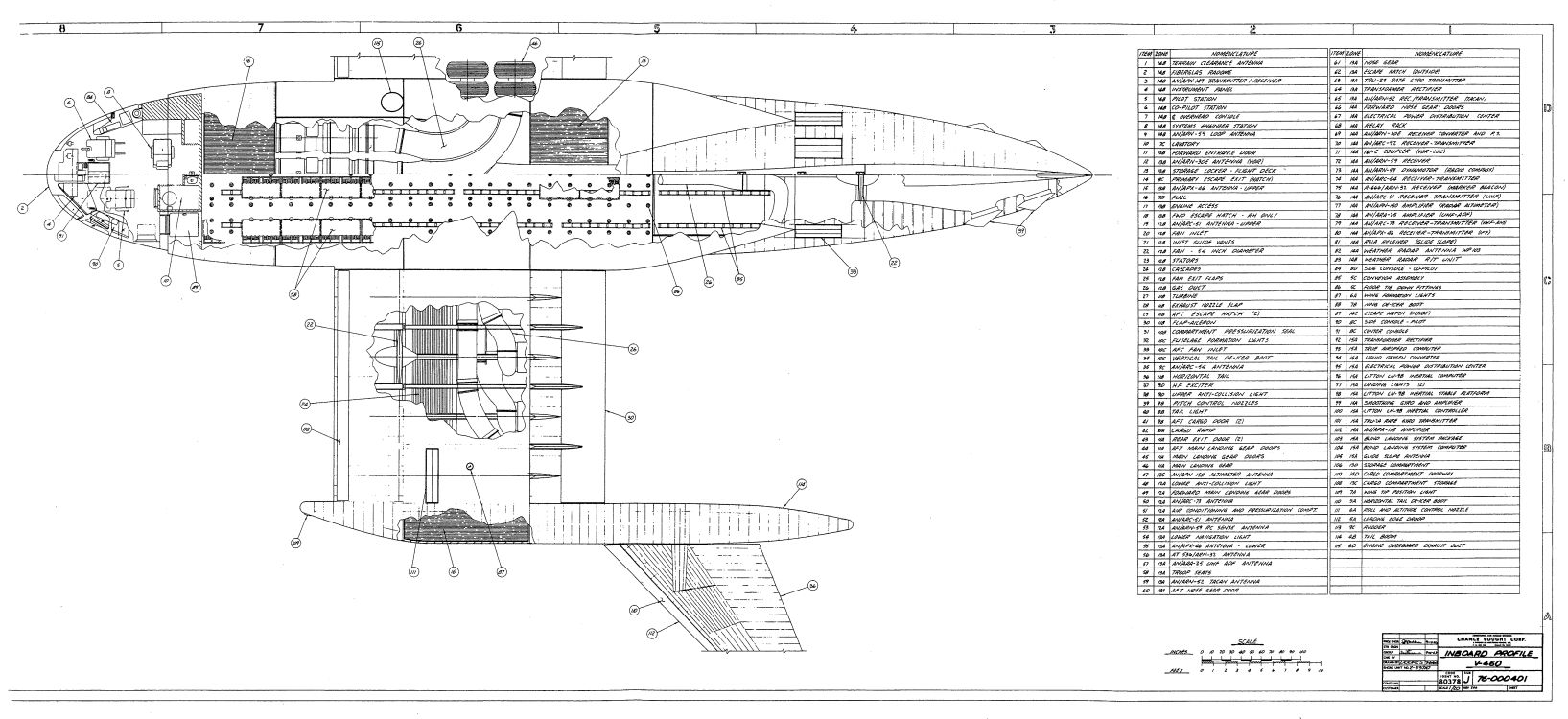An inboard top view, showing the substantial ductwork.
Note that on their own, the turbojet “gas generators” mounted above the fuselage would seem to be too small to provide vertical lift for the loaded cargo aircraft. But the exhaust from the turbojets would not be used directly for vertical thrust; instead, the high velocity gas jets would blow past turbines, mechanically linked to large-diameter multi-stage fans embedded within the wings. These fans would in turn be used to move a much large volume of air. The velocity of the air would be lower than the gas generator exhaust, but the increased mass flow rate would nevertheless provide an increased thrust. This is, in effect, a somewhat more complicated version of what happens in a standard high-bypass turbofan engine as used on modern jetliners… the high velocity exhaust from the combustors is used to drive the large diameter fans up front. It is a means to obtain higher thrust and higher fuel economy. But in the case of the V-460, the process is somewhat more complicated due to the mass of ductwork. Every inch of duct extracts energy – both via friction/drag, and by taking heat from the gas – from the exhaust, lowering the total amount of mechanical energy available to drive the fans.
2 Responses to “Chance-Vought V-460: part 3”
Sorry, the comment form is closed at this time.

I’d also worry about how many hardware failures it could sustain while in a hover without causing a fatal crash. It looks like a break down in one wing could cause ti flip over rather quickly.
One of the advantages of having a large number of lift engines is that a single engine-out is not immediately fatal. With four lift fans per wing, loss of thrust in one is only a 25% loss of thrust in that wing. Additionally, with the exception of engines exploding, engine failure typically doesn;t mean instant loss of thrust, but a loss of thrust over a few seconds, which should be counterable.